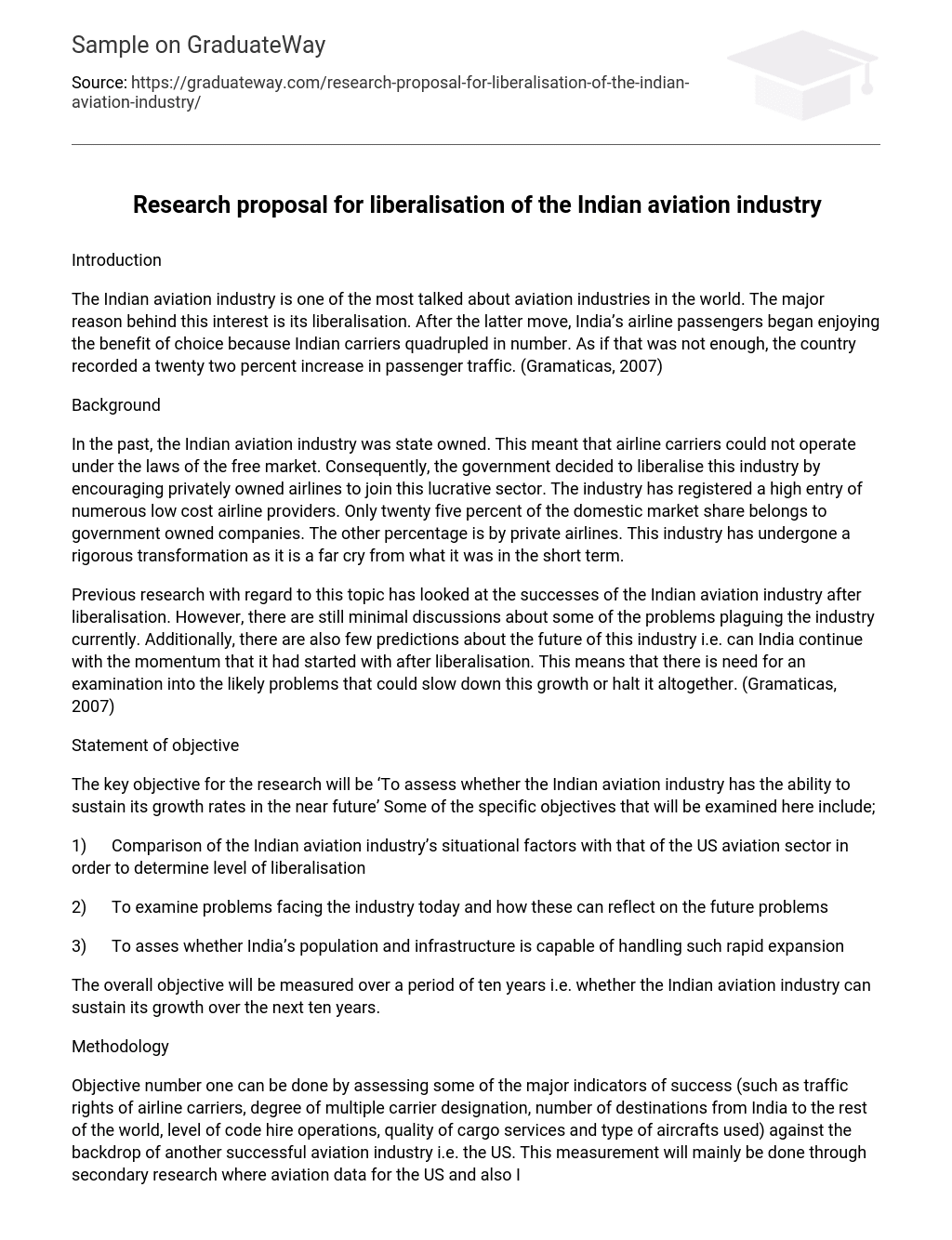Introduction
The Indian aviation industry is one of the most talked about aviation industries in the world. The major reason behind this interest is its liberalisation. After the latter move, India’s airline passengers began enjoying the benefit of choice because Indian carriers quadrupled in number. As if that was not enough, the country recorded a twenty two percent increase in passenger traffic. (Gramaticas, 2007)
Background
In the past, the Indian aviation industry was state owned. This meant that airline carriers could not operate under the laws of the free market. Consequently, the government decided to liberalise this industry by encouraging privately owned airlines to join this lucrative sector. The industry has registered a high entry of numerous low cost airline providers. Only twenty five percent of the domestic market share belongs to government owned companies. The other percentage is by private airlines. This industry has undergone a rigorous transformation as it is a far cry from what it was in the short term.
Previous research with regard to this topic has looked at the successes of the Indian aviation industry after liberalisation. However, there are still minimal discussions about some of the problems plaguing the industry currently. Additionally, there are also few predictions about the future of this industry i.e. can India continue with the momentum that it had started with after liberalisation. This means that there is need for an examination into the likely problems that could slow down this growth or halt it altogether. (Gramaticas, 2007)
Statement of objective
The key objective for the research will be ‘To assess whether the Indian aviation industry has the ability to sustain its growth rates in the near future’ Some of the specific objectives that will be examined here include;
1) Comparison of the Indian aviation industry’s situational factors with that of the US aviation sector in order to determine level of liberalisation
2) To examine problems facing the industry today and how these can reflect on the future problems
3) To asses whether India’s population and infrastructure is capable of handling such rapid expansion
The overall objective will be measured over a period of ten years i.e. whether the Indian aviation industry can sustain its growth over the next ten years.
Methodology
Objective number one can be done by assessing some of the major indicators of success (such as traffic rights of airline carriers, degree of multiple carrier designation, number of destinations from India to the rest of the world, level of code hire operations, quality of cargo services and type of aircrafts used) against the backdrop of another successful aviation industry i.e. the US. This measurement will mainly be done through secondary research where aviation data for the US and also India will be compared. This method was chosen because it would be difficult to get a summary of a country’s aviation industry from a specific airline or individual. Consequently, using a summary of the facts would yield more reliable results.(Centre for Management research, 2007)
The second specific objective will be measured by assessing the operational environment in India. It should be noted that this current success may simply be an indication of overall momentum within the sector. New players in the market have not yet stabilised and there may be some unforeseen problems in the future. The third objective is with regard to Infrastructural requirements. The airline industry is painstakingly demanding with regard to capital investments. There is a need to assess India’s readiness for these airline expansions. The latter two objectives will be measured through interviews for major Airline carriers in India. They are at a position to assess India’s current situation. Besides that, it will also assess some closely related industries that act as the aviation industry’s supplier.
Chapter outline
Title; Sustainability Of The Indian Aviation Industry
The research will contain ten chapters and they include;
Executive summary; will indicate objectives, methodology, findings and recommendation of the study
Introduction; brief summary about the current aviation industry
Background; discusses India before and after liberalisation of airline industry
Literature review; looks at other work concerning liberalisation of India’s aviation
Objectives; discusses overall objective of assessing sustainability of the Indian aviation industry
Methodology; use of secondary research for infrastructural performance and comparison with other carriers
Results; will present results in form of charts, tables and graphs
Discussion; will analyse whether growth in India can be sustained
Recommendations and conclusion; whether the aviation industry is doing well or not
Reference
Gramaticas, D. (2007): Sky’s the limit for Indian flight boom, retrieved from http://news.bbc.co.uk/2/hi/south_asia/6640147.stm accessed on 25th Aug
Centre for Management research (2007): Aviation industry in India, retrieved from http://www.iloveindia.com/economy-of-india/aviation-industry.html accessed on 25th Aug





